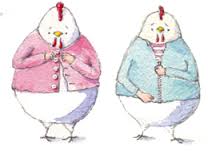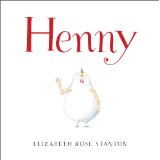
Today’s delightful picture book sweet story includes two vital messages: the importance of self-acceptance and unconditional parental love. This is a vital and reassuring message for all kids, especially adoptees.
Henny written and illustrated by Elizabeth Rose Stanton is a charming book about a most unusual chicken. Henny was born with arms instead of wings. This causes her great consternation. She feels left out, wonders how to fit in and doubts her “chickeness.” Fortunately, although Henny’s arms shock her mother, she accepts her chick and loves Henny without reservation. Children will easily recognize this powerful act of mother love.
Henny comes to discover that arms can be quite useful. They trail behind her gracefully, allow her to climb trees, plug her ears and brush her teeth. Being different in these ways allows Henny to stand out from other chickens. She delights in the limelight.
But Henny’s arms also cause difficulty, like requiring her to always go last. She tries to camouflage her differences and blend in. Still, the other animals make fun of her. Unlike other chickens, she must choose between gloves or mittens, between being right-handed or left-handed, getting hangnails or tennis elbow. What’s a chicken to do? Henny discovers her “difference” allows her to help farmer Brown in ways none of the other chickens can.
Stanton’s delicate watercolor and pencil illustrations fill the book with humor and charm. Henny comes to life with immense personality. Readers—young and adult— will connect with Henny’s gestures and facial expressions as she is a unique, well-rounded and talented chicken.
Young readers will identify with Henny’s struggle to face and accept her personal differences as well as the differences in others. Many will want to talk about how kids can be kind or mean to each other. This could include discussion of bullying as well—how it feels, what to do, etc.



